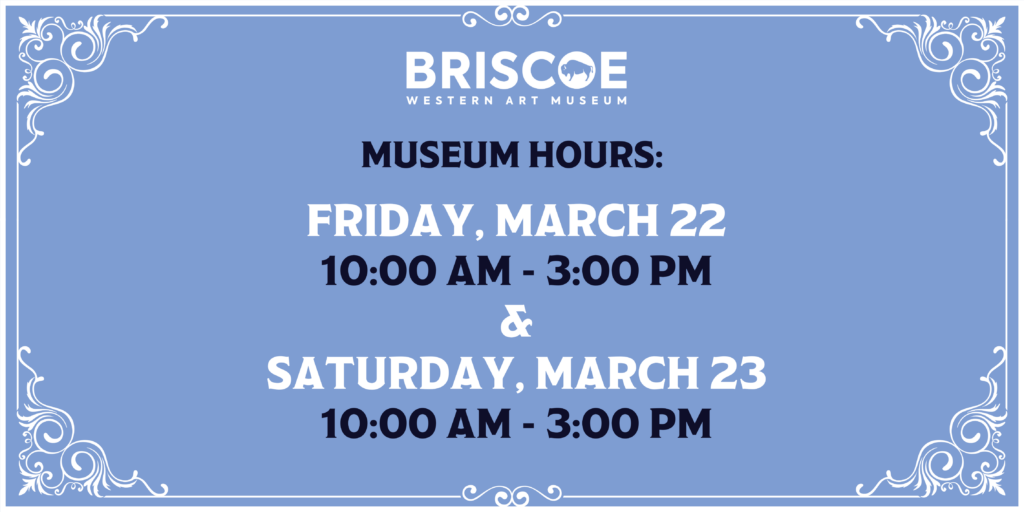Camino de Gálvez
As visitors to San Antonio search for a memorable activity to mark their stay in the Alamo City, they often opt for a narrated boat tour of the San Antonio River Walk. The guides tell interesting facts and anecdotes that shaped the city and river itself. Along the course of the tour, the boats sail by an immense bronze sculpture of a vaquero driving three long-horned steers up the riverbank. The vaquero pushes the cattle along with a sharp crack of his rawhide lariat. This double-life‒sized work was created by the cowboy sculptor T. D. Kelsey and is titled Camino de Gálvez. The placement and theme of this sculpture are quite appropriate to the history of San Antonio and the mission of the Briscoe Western Art Museum.
This statue was inspired by the efforts of Bernardo de Gálvez, general and governor of Louisiana, to gather supplies for his colonial American allies during the American Revolution. In 1779, Gálvez sent an emissary, Francisco García, with a letter to Texas Governor Domingo Cabello, both requesting and authorizing the very first official cattle drive out of Texas. García arrived in San Antonio de Béxar on June 20, 1779, and by August, 2,000 cattle gathered from the ranches of the missions and individuals were rounded up, however there is no evidence that they made it to Louisiana. The trail drive precedent that was established in San Antonio in 1779 shaped the future of the cattle-rich South Texas and that particular stretch of the San Antonio River.
Later, the low point in the river was utilized as the last crossing in the San Antonio River, facilitating the movement of livestock. A monumental sculpture by T. D. Kelsey pays homage to the ranching traditions that have been part of South Texas culture since the eighteenth century. Kelsey’s sculpture, Camino de Galvez, commemorates the first requested cattle drive from San Antonio to Louisiana in 1779, intended to feed American soldiers during the Revolutionary War, though its success is unverified.
Less than 100 yards from Kelsey’s sculpture, along the River Walk, one will find a San José tile marker, indicating that the area between the Briscoe and the Hotel Contessa was originally a low point in the river and the place where horses and cattle were often driven across it. After the end of the Civil War, the nation dealt with shortages of cash and fresh food. Fortunately, South Texas and Northern Mexico were home to hundreds of thousands of wild longhorn cattle. Their ready availability made the Texas trail-driving cattle industry possible. As the crews began their drive northward, they stopped in San Antonio to supply themselves for the months on the trail ahead. Often times, the outfit’s chuck wagon would be parked in Alamo Plaza as supplies were acquired. As this easy crossing point in the river, and its proximity to Alamo Plaza, it is conceivable that chuck wagons heading north would have lumbered through the San Antonio River in the same spot where the Kelsey statue now sits. As the Briscoe celebrates the art and culture of the West, it is fitting that the one of the museum’s most iconic sculptures illustrates the Western cattle tradition which San Antonio has been a key part of from the beginning. Truly, The West Starts Here and is marked by Camino de Gálvez.

T. D. Kelsey (1946), Camino de Gálvez (2014), Bronze, 126″ x 155″ x 84″, Purchased with funds provided by the Jack and Valerie Guenther Foundation in honor of Lindsay and Jack Guenther, Jr. Family.

BECOME A MEMBER
Help us bring the spirit of the West alive by becoming a Briscoe Partner!
Click here to become a member!
SUPPORT THE MUSEUM
Governor Dolph Briscoe and his wife Janey envisioned a Museum that would preserve the stories and traditions of the American West.






